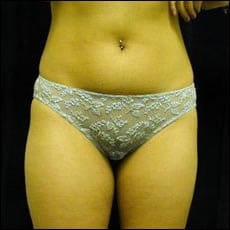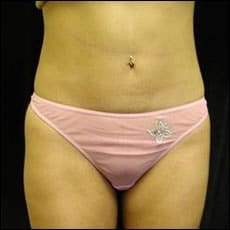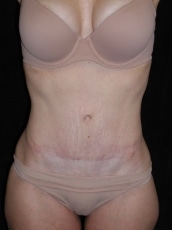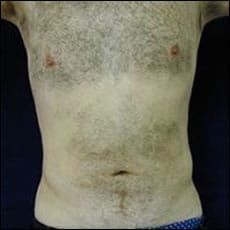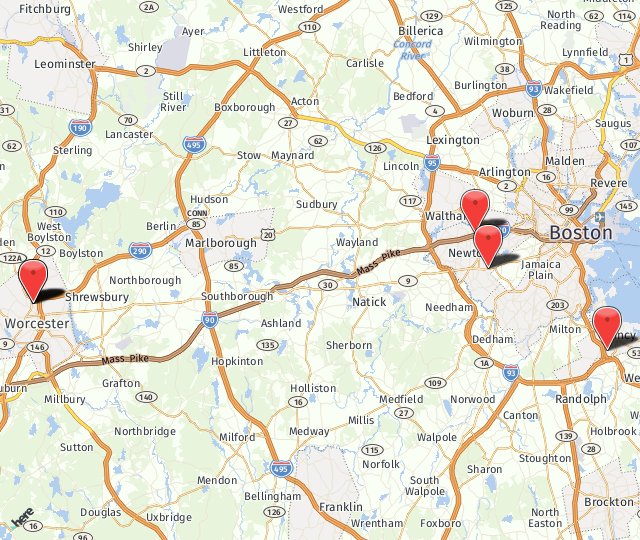What Is Liposuction?
Liposuction is a surgical procedure whereby localized fat deposits are removed using a suction device through small, well-hidden incisions to provide improved body contouring to the treated area.
Liposuction is not a method of weight loss. While higher volume liposuction does remove a lot of fat in local regions, the overall amount of weight lost is relatively modest, and certainly not as much as patients would like to see.
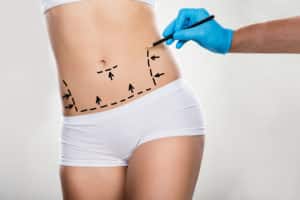
This procedure can be performed on most parts of the body where excess fat accumulates, but some areas respond better than others. Common areas treated are the abdomen, the flanks (“love-handles”), the thighs including “saddle bags,” around the knees, the chest (gynecomastia), the upper arms, and under the chin.
Who Is A Good Candidate For The Lipo Procedure?
Individuals who are good candidates for liposuction are generally at, or close to their ideal weight, but the problem areas, such as the abdomen, the flanks (“love-handles”), the thighs including “saddle bags,” around the knees, the chest (gynecomastia), the upper arms, and under the chin still bother them.
How Does The Lipo Procedure Work?
Depending on the extent of a procedure, Lipo can be safe if you’re using straight local anesthesia, local anesthesia with sedation (“twilight sleep”), or with general anesthesia. The procedure begins with the application of a wetting solution called “tumescent anesthesia”. This solution helps to numb the area. It also helps help reduce bleeding, providing a smoother result with less risk of dents or furrows.
After the wetting solution is administered, the next step is to create small incisions in the preferred area to remove fat. By approaching from different angles, if possible, we obtain more even results. Patients can be repositioned as needed to treat all areas. Incision usually close with a suture or two, but sometimes the incisions are left to drain. Band-aides and compressive garments are then put on afterward. Compression is worn for 4 – 6 weeks to control swelling and help with shaping after the surgery.
Liposuction Surgery Before And After
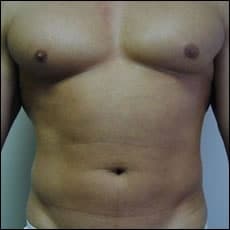

Click here to view more before and after photos.
What Is The Recovery From A Liposuction Procedure?
After the procedure, patients wear a compressive garment for 4 to 6 weeks at all times except when showering. Over the first week, patients should take it easy—nothing strenuous that might raise heart rate or blood pressure. This is to avoid bleeding or development of a fluid collection, and the first week is the most critical from this perspective.
After a week, I encourage my patients to proceed with cardio activities, generally low-impact, in order to recondition themselves after a big surgical procedure and a week off. After two weeks, I allow patients to go ahead with resistance training. They advance this as they tolerate it over the subsequent four to six weeks.
As for work, many patients can have surgery Friday and be back to work on Monday, presuming they have a non-strenuous job. Those whose jobs are more physical may need to take a week or two off of work if they’re able to.
Liposuction - Before & After
What People Say About Us!
"I spent a good portion of my 20’s suffering from Gynecomastia. In 2010 I reached out to Dr. Rick Silverman for a consultation. It was the best money I ever invested in myself."
Liposuction Results & Expectations
Results of liposuction vary from person to person, but generally, the goal is to improve contour in the areas that receive treatment. Patients may see some loss of weight, but this is usually in the five to ten pound range, and patients should know that this isn’t a weight loss procedure, but rather a contouring procedure. In some cases, time is a requirement to allow for skin retraction and tightening, and for resolution of swelling.
Preliminary results are obvious immediately in most cases. After swelling resolves, somewhat normal appearance of the improved area will be observed within six to eight weeks post-op. Continued healing will allow for the skin to tighten and smooth out. The results of liposuction are long-lasting if patients maintain a prudent diet and exercise regimen and avoid weight gain. Should a patient gain weight after surgery, the distribution of that weight gain may be different with less going to the areas that are receiving treatment and more fat going to other areas that were not.

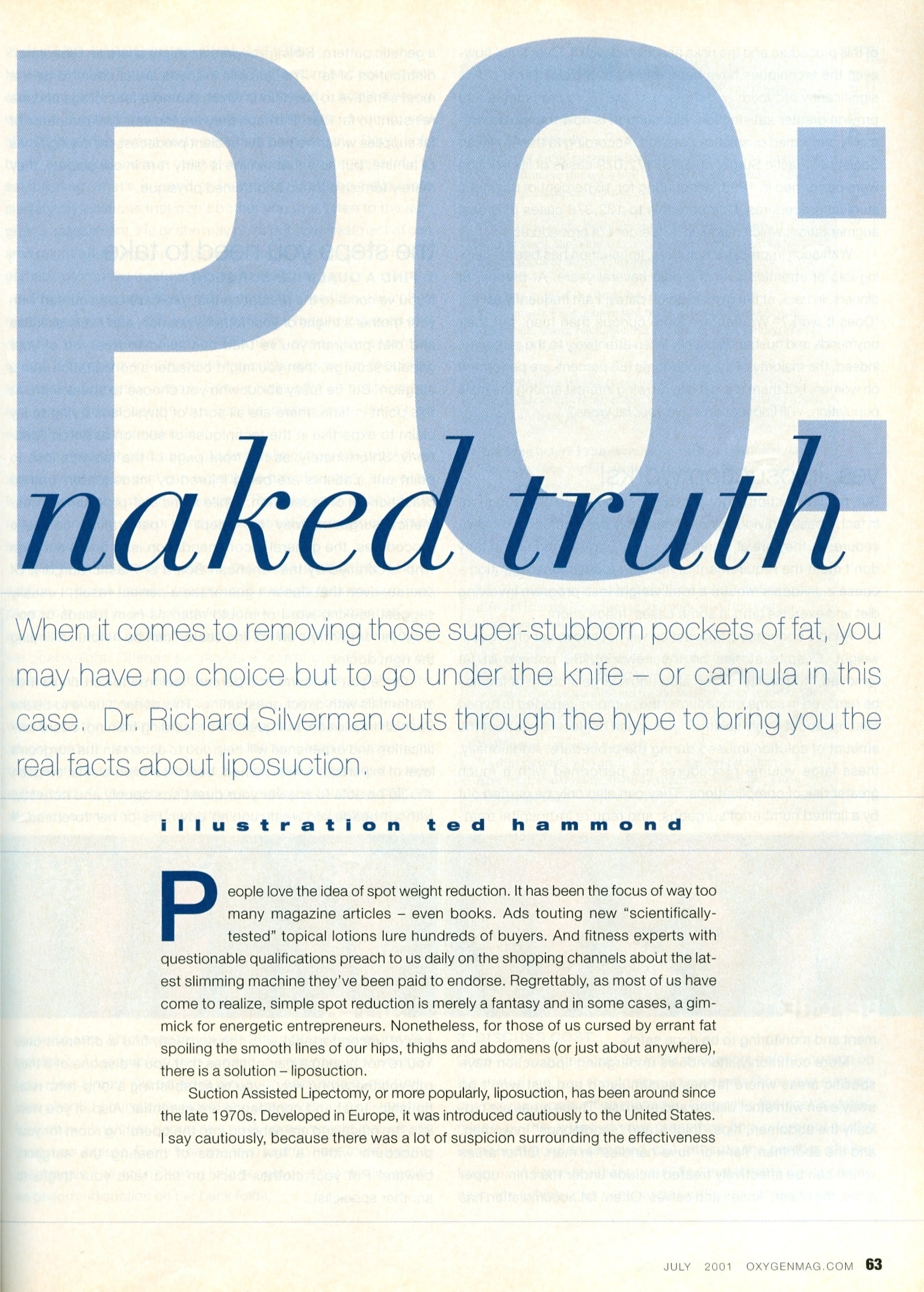
Tummy Tuck vs Liposuction
There is a huge difference between liposuction and a tummy tuck. Liposuction removes fat, not skin. This happens by very small incisions that are almost impossible to notice after the procedure. A tummy tuck may include liposuction as part of it, but the primary difference that large areas of skin are removed with a tummy tuck in order to tighten the abdominal wall. This results in a large scar across the lower abdomen, which is very different from liposuction.
Are There Risks To A Liposuction Procedure?
Prior to the lipo procedure, patients should avoid supplements or medications that might cause bleeding. Examples of these medications include aspirin or other NSAIDs, fish oil, and fat burners. Patients should be aware of limitations after the surgery and plan accordingly, whether it’s making preparations at home or arranging for absence or adjustments in work schedule.

Liposuction, when done properly in an appropriate setting is very safe.
There are risks with any surgical procedure, and it’s important for patients to understand that lipo is a surgical procedure, in spite of the fact that incisions are very small and the surgical sites can hide under the skin.
Risks include any associated anesthetic risks, which are generally minimal for young, healthy patients typical of those undergoing liposuction. Surgical risk includes bleeding and infections, though these are quite rare as well.
There is typically sensory alteration in sites that are receiving treatment, but most of the numbness resolves over time. Fluid collections (seromas) can occur post-operatively, and these are usually easy to treat with aspiration using a needle and syringe. Long-term issues are mostly related to contour irregularities from under- or over-suction. These might require a secondary or “touch-up” operation.
How Much Does Liposuction Cost?
Liposuction cost will vary from location to location with higher prices in high cost of living areas. In the Boston area, the cost for most liposuction procedures focusing on one area (abdomen/flanks or thighs, for example) is approximately $6000 – $8000 total cost (including hospital and anesthesia fees).

Combining areas will cut overall cost per area, but this must be done in a manner which is safe and avoids excessive volume of aspirate.
Liposuction FAQ’s:
Will I Be In Pain After Lipo Procedure?
Lipo is painful to some degree in all patients, though tolerance varies. In a very extensive procedure, patients may require pain medication for several days post-operatively, in comparison to smaller procedures, where minimal medication is what patients will use afterwards.
Will I Need Medication Before Or After Surgery?
There are no specific medications that I recommend prior to liposuction surgery, though there are various homeopathic remedies, such as arnica, which may be popular. I don’t recommend anything specific, but in most cases, I’m okay with patients who use such medications.
When Can I Return To Normal Activities?
This depends on what you refer to as normal activities. Most patients can resume most activities within a few days, other than very strenuous exercise or labor. Most patients are nearly completely back to normal within 4 to 6 weeks after surgery. Check out our “Getting Back to Training Instructional Sheet” for more information.
Does Liposuction Treat Cellulite?

How Long Does a Typical Liposuction Procedure Take?
A typical liposuction procedure lasts one to three hours. Smaller areas or less extensive surgeries may take less time. Larger areas or multiple treatment sites may extend the duration.
Dr. Rick Silverman plans and executes each procedure with extreme care. He works hard to provide his patients with the best possible results while also reducing the amount of time spent under anesthesia.
Are There Any Dietary Restrictions Before or After the Procedure?
Dr. Silverman suggests that patients maintain a balanced diet before undergoing liposuction. This will optimize general health and prepare the body for a successful surgery.
For at least two weeks before the procedure, it's also crucial to avoid:
- Anti-inflammatory drugs
- Supplements like fish oil and ginseng
- Alcohol
These products can increase the risk of bleeding.
After the surgery, eat a nutritious diet rich in proteins, vitamins, and minerals to support the healing process. Staying hydrated and avoiding processed foods can also aid in a smoother recovery. This will help you maintain the results of liposuction as well.
How Much Fat Can You Remove in One Liposuction Session?

Remember that removing too much fat at once can increase the risk of complications. Dr. Silverman may recommend more than one session for patients who need significant fat reduction.
Can Liposuction Address Loose Skin?
Liposuction is not meant to address loose or sagging skin.
If significant skin laxity is present, additional procedures may be necessary. For example, a tummy tuck can help you achieve a smoother, tighter appearance.
During the initial consultation, Dr. Silverman will assess your skin's elasticity. He'll then provide recommendations tailored to your specific needs.
How Soon Can I Drive After the Procedure?
Driving after a liposuction procedure is generally not recommended. You should wait until you are no longer taking prescription pain medications and feel comfortable performing normal activities.
It can take anywhere from a few days to a week to reach this point. The exact amount of time depends on the extent of the surgery and individual recovery rates.
Dr. Silverman advises patients to have someone available to drive them home after the surgery. He recommends that you arrange for support during the initial recovery period as well.
Why Choose Dr. Rick Silverman?
Choosing Dr. Rick Silverman for liposuction in Boston means receiving treatment from a highly qualified professional. Dr. Silverman is a board-certified plastic surgeon who specializes in treating bodybuilders and fitness trainers. With four surgical centers in Newton, Worcester, and Quincy, MA, he brings expertise and skill to every procedure.
Dr. Silverman's activism in the medical community, including co-founding and presiding over Hands Across the World, highlights his dedication to providing surgical care to underserved populations. This blend of professional excellence and humanitarian efforts makes Dr. Silverman an excellent choice for liposuction and all your other aesthetic needs.
Your Liposuction Consultation
When you come for your consultation, we will review your history, including previous weight gain and weight loss history, other health problems and previous surgery. Our doctors will perform a physical examination and take photographs of the specific body parts that will receive the liposuction procedure.
Our doctors review the surgery in detail including risks and benefits. At any moment, you will have the opportunity to ask questions about the procedure and view photos. Payment and scheduling options will be reviewed. Afterwards, you can proceed with scheduling and you’ll be on your way to improved contour!
Schedule a Liposuction Consultation
If you are interested in learning more about liposuction, call our office at {tel} to schedule a consultation with Dr. Rick Silverman or complete an online contact form and our office will be in touch with you. Thank you for choosing Dr. Rick Silverman!

